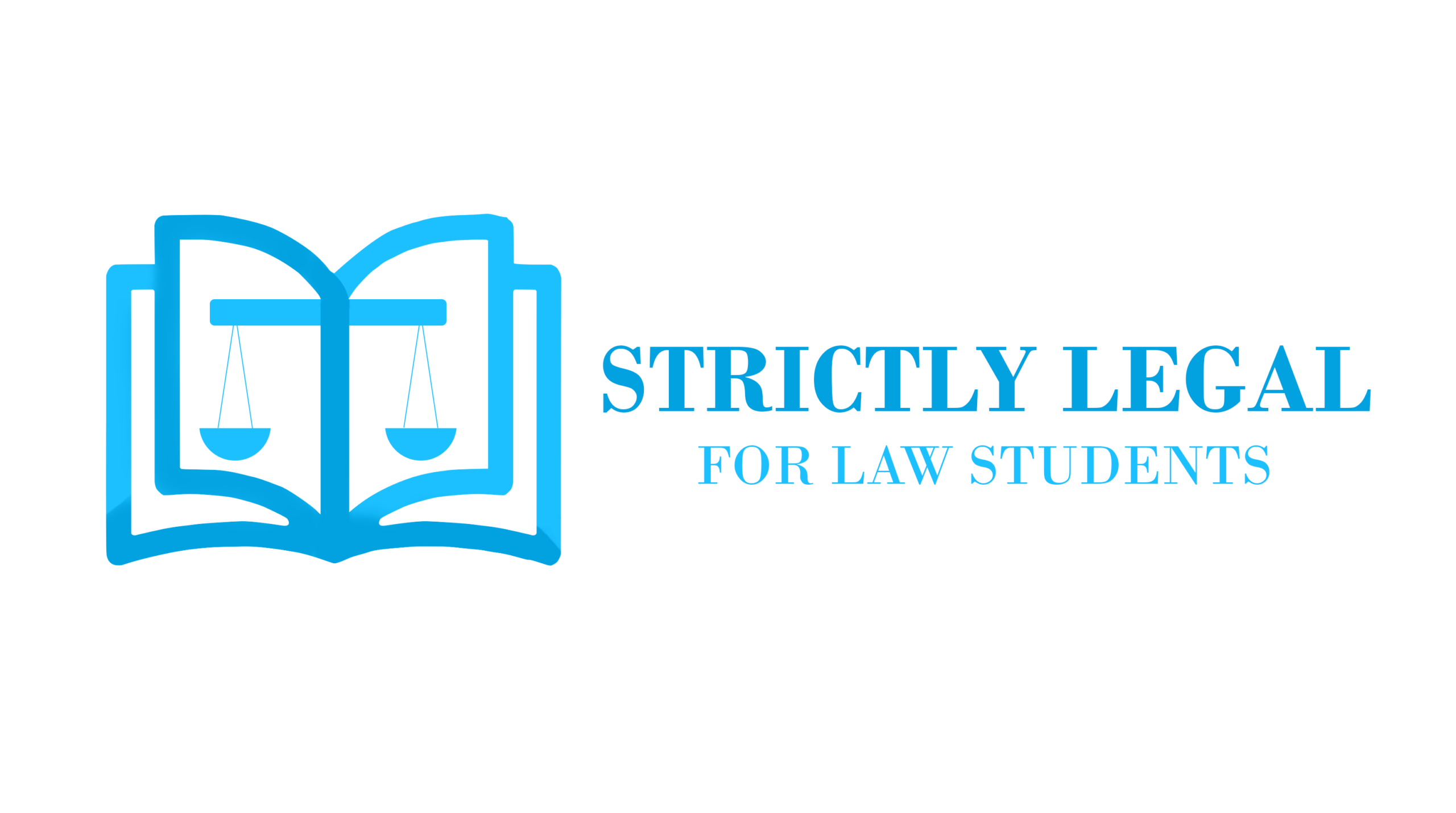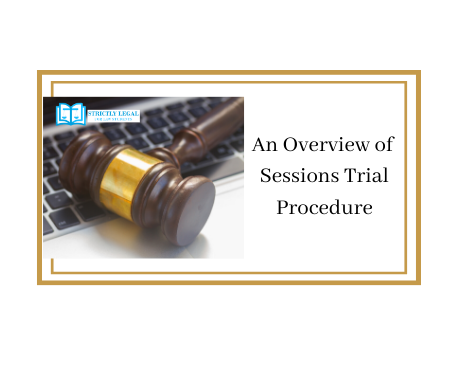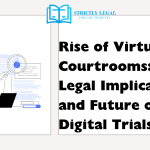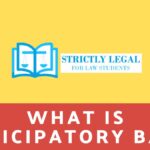In this article, we will discuss trials from the sessions court perspective and dig in and around the topic. This post should work like a FAQ for session court trial procedure.
This article is co-authored by SATYAM NIMBALKAR
Table of Contents
Introduction
Trials of Warrant cases are more elaborate and are of a more serious nature than that of the Trials of Summons cases. Even under Warrant trials, the cases relating to offences of higher gravity are dealt with by the Sessions Court whereas the cases relating to offences of lesser gravity are dealt with the Magistrates. Section 26 of The Criminal Procedure Code i.e “Courts by which offences are triable” read with Schedule I of the Code i.e “Classification of Offences” is used to determine whether an offence is triable by the Magistrate or the Court of Sessions. However, even in cases where an offence is exclusively tried by Sessions Court, it cannot take cognizance of such an offence. According to Section 209 of the Code, A competent Magistrate may take cognizance of such an offence and then commit the case to the Court of Sessions for Trial.
Let us now see what a session’s trial comprises of:
Parties to trial
Prosecution
- In a Sessions Trial, the prosecution will be conducted by a public prosecutor who shall open the case. Public prosecutor is a person appointed under Section 24 of the Code. If the prosecution is in the hands of the public prosecutor, it does not matter if a privately engaged lawyer acts for the prosecution.[1]
[1] Medichetty Ramakistiah v. Ramakistiah v. State of A.P, AIR 1959 AP 659.
Defense
According to Article 21 of the Indian Constitution, it is the Fundamental Right of the accused to get adequate and fair opportunity to prepare for his defense. Section 303 gives the accused a right to be defended by a counsel of his choice. If the accused does not have the means to hire a legal-counsel, then, under section 304 of the code, the state has to provide the accused with a legal-counsel to defend himself.
Hence, if legal aid is to be given to the accused, the court has to make timely arrangements to provide the accused with a competent lawyer for his defense and also give such an accused adequate time and facilities for the preparation. Under sections 207 and 208, the magistrate taking cognizance of the case has to provide the accused with all the necessary information and documents relating to the case, for eg. Police report, FIR, statements recorded by the magistrate or police during inquiry or investigation, etc. However, in Shamshul Kanwar v. State of U.P, the accused is not to be provided with the statements recorded under Section 161 of the Code. (i.e the statements recorded from the examination of Witnesses)
Support persons
- When a layman goes to court he would not understand the terms and procedures, language or rules of the court room. Here is where the role of Support persons comes. Support persons are not necessarily lawyers. They are generally social workers or volunteer counselors. Support persons also provide with the emotional support needed throughout the trial and it is seen mostly in POCSO cases a support person accompanies the victims and the act also provides for the same.
Role of Support persons before the Trial are as follows:
- Explaining the role of the judicial authorities like the judge, magistrate, lawyer, jury, etc.
- Explaining the structure of trial and the legal language being used.
- Discuss the court timings and decide where to meet on the day of the appearance. Etc.
Role of the Support persons during the trial
- The support person will accompany you to the witness room to give you assistance while submitting evidence. The support person is allowed to stay in the court room while you are giving your evidence even if it is a closed court room.
Role of the Support persons after the trial
- The support person will discuss the outcome of the trial
- Discuss the next step to be taken.
Notice of Appearance
The notice of appearance is given to the accused to attend the court. In this document, it is mandatory to mention the date, time, court number, presiding Judicial Officers’ name, and the case details. When such notice of appearance is not complied with, the court can issue a warrant in respect of the accused to attend the proceedings. Further, the court can even pass an adverse order in a case where accused remains absent like cancellation of bail, forfeiture of surety amount.
Type of Proceedings
Open Court Proceedings
- Open court proceedings: As the name suggests open court proceedings essentially mean that the case proceedings are to be conducted in an open court. In open court proceedings, the media and the general public are free to enter the court and watch the proceedings. However, this provision lies to some extent to the discretion of the judge or magistrate hearing the case.
It was held by the court in, Chhatisgarh Mukti Morcha v. State of M.P lack of space in the court-house may justify a judge in admitting only a limited number of persons to attend the proceedings in the interest of public health and hygiene.[1] The discretion is given to the judge, depending upon the circumstances of the case, to hold the proceedings in a place other than that of the court-house but not connected to the parties to the proceedings in cases of emergency.[2] It also permits the judge to hold the proceedings inside the jail premises where the accused is confined provided that the offences tried are unconnected to those premises.[3] It is important to note that if the accused feels that he may not get a fair trial in any other place than that of the court-house the, proceedings cannot take place in those other places.
[1] Chhatisgarh Mukti Morcha v. State of M.P, 1996 Cri LJ 2239 (MP).
[2] AIR 1950 Mad 441.
[3] Mohd. Shahabuddin v. State of Bihar, (2010) 4 SCC 653.
- In-camera proceedings: Section 327 of the code lays down those cases whose proceedings have to be conducted through in-camera proceedings. In-camera proceedings are those proceedings that are carried out through video conferencing to protect the privacy of the accused or victim.
For the reasons of sensitivity, the public and media are restricted from attending such proceedings. In-camera proceedings are an exception to the rule of an open court. Proceedings of offences committed under section 376, 376-A,376-C, 376-D of the Indian Penal Code and rape offences are to be conducted under in-camera offences. In State of Punjab v. Gurmit, it was held that in order to protect women against publicity (in offences of rape) the court has the discretion to hold inquiries and trials through video conferencing.[1]
[1] State of Punjab v. Gurmit, (1996) 2 SCC 384.
Discharge
Section 227 of the Code deals with those cases where the judge discharges the accused. The main aim of this section is to save the accused from continuous harassment which is a necessary concomitant of a protracted trial.[1] This section specifies that the judge discharging the accused has to mandatorily record his reasons for doing so. This acts as a source of information to the prosecution informing him as to what went wrong with the investigation.
The object of making it mandatory for the Sessions Court to record its reasons for discharge is to enable the superior court to examine the correctness of the judgement of the Sessions Court.[2]
The main role of the magistrate/judge, after scrutinizing the evidence and infirmities is to ascertain whether there is prima facie, any suspicion on the accused. It has been held that the reasons for suspicion of the Judge/magistrate is a subjective concept and differs on the facts of each case.[3]
In Rukmini Narvekar v. Vijay Satardekar, it was held that, in the normal course, there is no scope for the accused to submit any evidence at the time of framing the charge.[4] Once a person has been charge-sheeted, there is no question of dropping any charge, the person has to be either acquitted or convicted[5]
[1] Charan Singh v. Shanti Devi, 2004 Cri LJ 2408.
[2] State of Karnatake v. L. Munniswamy, (1977) 2 SCC 699.
[3] Union of India v. Prafulla Kumar Samal, (1979) 3 SCC 4.
[4] Rukmini Narvekar v. Vijay Satardekar, (2008) 14 SCC I.
[5] Prakash Chander v. State, 1995 Cri LJ 368 (Del).
Framing of charge
Section 228 of the Code deals with those cases where the Judge/magistrate frames a charge on the accused. The purpose of Section 227 and 228 is to ensure that the court is content that the accusation made against the accused is not frivolous and that there is sufficient material for proceeding against such an accused. In Sammun v. State of M.P it was held, if a case which is committed to a Court of Sessions even when such a case is not to be exclusively triable by such a court will not restrict the Sessions court from taking cognizance of that case.[1]
It has been held that a case that was pending before an Additional Sessions Judge could be transferred to the Chief Judicial Magistrate if the former had not taken cognizance of that case.[2] In some very rare cases, the accused will be allowed to submit such evidence which would prove that the entire prosecution case was bizarre and frivolous.
[1] Sammun v. State of M.P, 1988 Cri LJ 498 (MP).
[2] State v. Y.V. Mahra, 1988 Cri LJ 1488 (HP).
Compliance of documents
Section 294 of the Code deals with the compliance of documents. The object of this section is to avoid as much delay and unnecessary expenses as possible in the criminal proceedings. The word “any document” used in this section refers to any number and any type of documents submitted by the accused or prosecution irrespective of the nature and the character of it.[1] If the party does not dispute the genuineness of the documents filed by the opposite side under this section, it amounts to an admission that the entire documents submitted is true and correct.
[1] Vinod Kumar v. State of Haryana, (1987) Cri LJ 1135 (P&H)
Issuance of witness summons
Section 311 of the code deals with witness summons. The main object of summoning a witness is so that the court gets more clarity of the case at hand. It is important that the court does not leave any scope of questions being unanswered in a case and hence, this section plays an important role.
- Interpretation of Section 311: From the plain reading of the section it can be ascertained that the section is divided into two parts. The first part uses the word “may” which gives that part a discretionary power while the second part uses the word “shall” making that part mandatory. As the ultimate aim of the court is to dispense justice, the court can exercise its power to summon any witness at any given point of time during the proceedings of that case. Similarly, It was held that, there is no limitation on the power of the court to call upon a witness at any stage of the proceedings provided that the court is bona fide of the opinion that for the just decision of the case, such a step should be taken.[1] It is not true that the requirement of a just decision limits the action to something in the interest of the accused only, it may also benefit the prosecution.[2] What is required for a court to summon a witness is that it should have a bona fide reason to think that the summoning of that witness would be essential in dispensing justice.
“In Mukti Kumar v. State of WB, it was held that what is a bona fide reason for summoning a witness by the court is subjective and not objective, which is to say that it will depend on the facts and circumstances of each case.[3]
The main objective of this Section is to do justice to the case and not to fill up the gaps in the prosecution or the defense evidence.[4]
The court will issue a summons to call and examine or re-examine a witness for its own clarity of the case and not for the benefit of the prosecution or defense. In Niranjan Ghosh v. Ananda Mondal, where the prosecution failed to examine its witness promptly, its request for recalling the witness was declined by the court.[5]
In the normal course, the court, to form a bona fide opinion should be able to make an order under Section 311 only after the closure of evidence of the prosecution and defense. However, the court can order to recall a witness for examination at any point in the proceedings before the final judgment is pronounced.[6] It has been held that the court can make an order under Section 311 even before the prosecution evidence is closed.[7]
It is to be noted that a witness whose examination or cross-examination is not yet done cannot be called upon by the court under this section. When a witness is summoned by the court under this section, both, the prosecution, as well as the defense, can cross-examine that witness.[8] When a witness is called upon by the court under section 311 and when both the sides question that witness, it cannot be said that the witness was cross-examined. For it to be a cross-examination, the particular witness should be called upon by either party.
[1] Budh Ram v. State of Punjab, 1996 Cri LJ 3356.
[2] Chhaganlal Daga v. M. Sanjay Shaw, (2003) 11 SCC 486.
[3] Mukti Kumar v. State of WB, 1975 Cri LJ 838 (Cal).
[4] Vijay Kumar v. State of UP, (2011) 8 SCC 136.
[5] Niranjan Ghosh v. Ananda Mondala, 1995 Cri LJ 4086 (Cal).
[6] Gandharba das v. State of Orissa, 1994 Cri LJ 294 (Ori)
[7] Kewal Gupta v. State of HP, 1991 Cri LJ 400 (HP).
[8] Rangaswami v. Muruga, AIR 1954 Mad 169.
Examination of Witnesses
In a warrant trial, when the police makes the report, examination of the witnesses are performed by the prosecution after the charges are framed and the accused pleads guilty, then the court gives the prosecution the opportunity of proving the accused guilty. In such a situation the prosecution may call upon his witnesses and use their statements as evidence. This is called examination in chief.
Thereafter, the defense side will get an opportunity to question the witnesses of the accused with a view to weakening his case. This is called cross-examination of that witness. After this stage, the prosecution again has the opportunity to call upon the same witness and re-question him. This is called as re-examination. The same procedure follows for the witnesses of the defense.
When there are more than one witnesses, each witness shall be examined individually and separately. When a witness of one side is being examined, the other witness cannot be a witness to such examination and will have to stay out of the courtroom until such an examination is completed. The examination of the witnesses should be taken on oath. The judge has the power to decide on the veracity and reliability of the statements of the witnesses.
Examination of accused under section 313 of CRPC
Section 313 personally enables the accused to explain himself of the circumstances appearing in the evidence against him. As per this section Court may at any stage without any warning put forward questions to the accused as deemed necessary or after the prosecution has provided its material evidence, and completed witness examination as per Section 230, Section 231 of CR.P.C, and before he is called in for his defence, the judge shall direct the appearance of accused as per Section 313 of CR.P.C, question him generally of the case. This is the first time that the Judge hears the accused and his explanation of the circumstances of the evidence provided against him.
The evidence provided by the witnesses is put to him in the question and answer form. Oath is not administered during the recording of the statement and nothing said by the accused would use against him at any point in the trial. He would not be punished if he refuses to answer or gives false answers to the questions asked. The answers given by the accused may be considered for any other trial or any other inquiry for any other offences, which his answers may tend to show that he has committed.
The Court may permit the filing of the written statement as sufficient compliance to the section. In Samsul Haque vs State of Assam (Criminal Appeal No. 246 of 2011) The Supreme Court considered the rights of the accused as enshrined in Section 313 of CR.P.C. It observed that the incriminating material is to be put to the accused so that he gets a fair chance to defend himself.
This is in recognition of the principles of Audi Alteram Partem. The Supreme Court in Asraf Ali vs State of Assam (Criminal Appeal No. 174 of 2011), has observed that the object of Section 313 is to have a direct dialogue between the Court and the accused.
If the point of evidence upon which the judgment of conviction is based upon, it is right and proper that the accused be asked questions and be given a chance to explain himself. When no specific question has been put forth by the trial court on an inculpatory material in the prosecution evidence, it would vitiate the trial. No indication of inculpatory material in its relevant facets by the Trial Court to the accused adds to the vulnerability of the prosecution’s case.
Examination of defense witnesses
At this stage the Court after taking evidence presented for the prosecution, recording the statement under Section 231, if the judge believes that the accused may have committed an offence. If the accused is not acquitted under section 232, the Court may allow the accused through his Advocate to produce defence witnesses, if any, to get examined.
As per Section 315, the accused himself can be a competent witness for the defence. An accused can only be a defence witness if he submits his request in writing. He is administered the oath to give the evidence to disprove the charges levied against him. If the accused fails to provide any evidence, the same would not be used as a presumption for his offence. Any person whose proceedings has started under Section 107, Section 108, Section 109, Section 110, or under the Chapter IX or under Part B, Part C or Part D of Chapter X may offer himself as a witness in such proceedings. In E Vanitha vs Smt. S. Lakshmi (CRI MP NO. 5916 of 2017) the petitioner in this case was the accused of the alleged offence under sec 138 of Negotiable Instruments Act, 1881.
In the said case the examination of witnesses from the Complainants side was over. Thereafter, the accused was given the chance to present their witnesses where the accused chose not to present any witness on her behalf. Thereafter at the arguments’ stage, the accused wanted to examine herself as the witness under sec 315 of CR.P.C and had requested the Trial Court for the same. Which was rejected and hence the Petitioner approached the High court.
The Madras High Court observed that Section 315 does not provide a time limit for invoking the said section, there is no legal bar expressly available to reject on the grounds it was belated. The Court was of the view that when an accused wants to let in evidence for herself, it should be allowed. An opportunity permitting the accused to let in her evidence on the defence side, in the view of Section 315, in the interest of justice is inevitable and is also required.
Final arguments
As per Section 234 of CR.P.C once the examination of the witnesses (if any) for the defence is complete, the prosecution shall sum up his case and the defence is entitled to reply. If the defence raises any question on point of law, then the prosecution with the permission of the Judge shall make submissions on reply to the point of law.
Thus, the prosecution begins the final arguments and the defence closes the final arguments unless a question is raised by the defence on point of law.
Judgement
Section 235 (1) of CR.P.C mentions that on the basis of accused statement, material evidence, witnesses and arguments presented by both prosecution and defence the Hon’ble Judge shall pronounce his judgment of acquittal or conviction of the offence committed. In the case there is an acquittal then the court shall direct the accused to execute a bond in which he shall state he shall be present if any challenge to the Judgement is made.
Hearing of accused on the point of sentence if the judgment of conviction is pronounced by the Judge:
Section 235(2) implies that once the conviction of offence is pronounced, the court will hear the accused on the question of sentence, and at that stage, it is open to the accused to produce such material on record such as to show the mitigating circumstances in his favour.
This is also called as pre-sentence hearing. It gives the opportunity to the accused to adduce mitigating circumstances in his favour. The judge shall then pass the sentence on him as per the law. The Judge while passing the sentence shall try to gather all information that may influence the sentence. The object of this section is to give the convict an opportunity to give evidence of any mitigating circumstances in his favour.
The accused is asked explicitly what he has to say about his sentence and if there is any proof he can provide on his side to mitigate the sentence. In Santa Singh vs State of Punjab, (1976 AIR 2386) Supreme Court held that the Judge should first pass the order of conviction or acquittal. If the accused is convicted then the Judge shall hear the conviction the question on sentence and only then the Court can sentence him.
In Bacchan Singh vs State of Punjab, it was ruled by the Supreme Court that it provides for the bifurcated trial and specifically gives accused person a right to a pre-sentence hearing which may not be strictly relevant to or connected with a particular crime under inquiry but may have a bearing on the choice of the sentence. If the Judge proceeds as per Section 360 of CR.P.C, then the Judge may order to release the convict on probation of good conduct or after admonition.
This section is intended to save young people from going to jail which may have a bad effect on young minds when made to stay among hardened criminals. This section also intends to save men of more mature age who have committed a crime due to bad influence, ignorance or inadvertence, who but for such lapses, might be expected to be good citizens. It is not intended that this section is used to save the experienced men of the world who deliberately commit criminal offences.
In Jugal Kishore vs State of Bihar (1989 CriLJ 2063), the Supreme Court explained the rationale behind this section: “the object of the provision is to prevent the conversion of youthful offenders into obdurate criminals as a result of their association with hardened criminals of mature age in case the youthful offenders are sentenced to go imprisonment in jail.”
Sentence
As per Section 28 of CR.P.C, a Session Judge or an Additional Sessions Judge may pass any sentence authorized by law, but any death sentence passed shall be subject to confirmation of the High Court. An Assistant Session Judge may pass any sentence authorized by law, except death sentence, imprisonment for life, or imprisonment exceeding 10 years.
Can sessions court suspend sentence? Power to grant bail post-conviction
This section stipulates the post-conviction and pre appeal period. As per Section 389(3) of CR.P.C, the convicted person can apply for the suspension of sentence to the Court which convicted him. So, the Sessions Court can suspend the sentence of the convict it convicted, if the convicted person is able to satisfy the Court that he is going to present an appeal. The two circumstances under which a convict shall be granted suspension of sentence are:
- If the convicted person who has applied for suspension has been imprisoned for the offence for not more than three years;
- If the offence that the person is convicted is a bailable offence, and at the time at which he was convicted he was on bail.
If these two conditions are satisfied then the Judge shall order the suspension of sentence of the convict, as long as he is released on bail. The bail in these cases is granted for period, providing sufficient time to the accused to file appeal in the appellate court.
Conclusion
The above article aims at giving an overview of Sessions Trial so as to enable People to understand the concept in simple language.
This article is co-authored by SATYAM NIMBALKAR

Users not registered with Strictlylegal can Email us their content and the same are posted through this account. In case of abuse, kindly let us know at [email protected]




